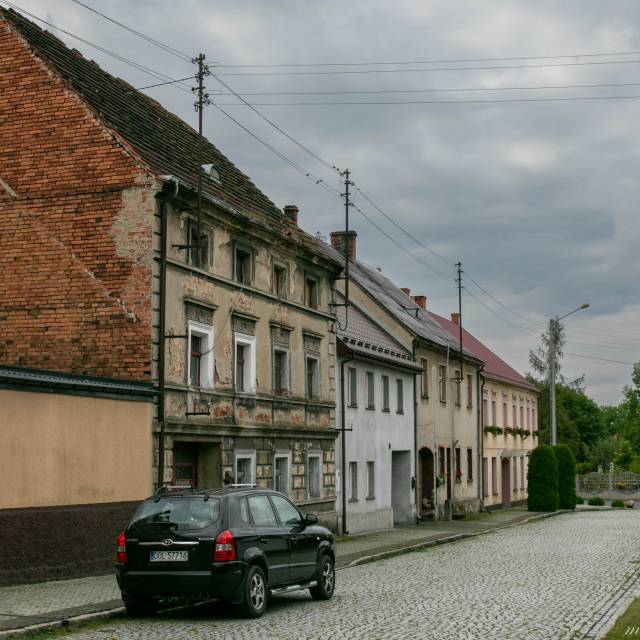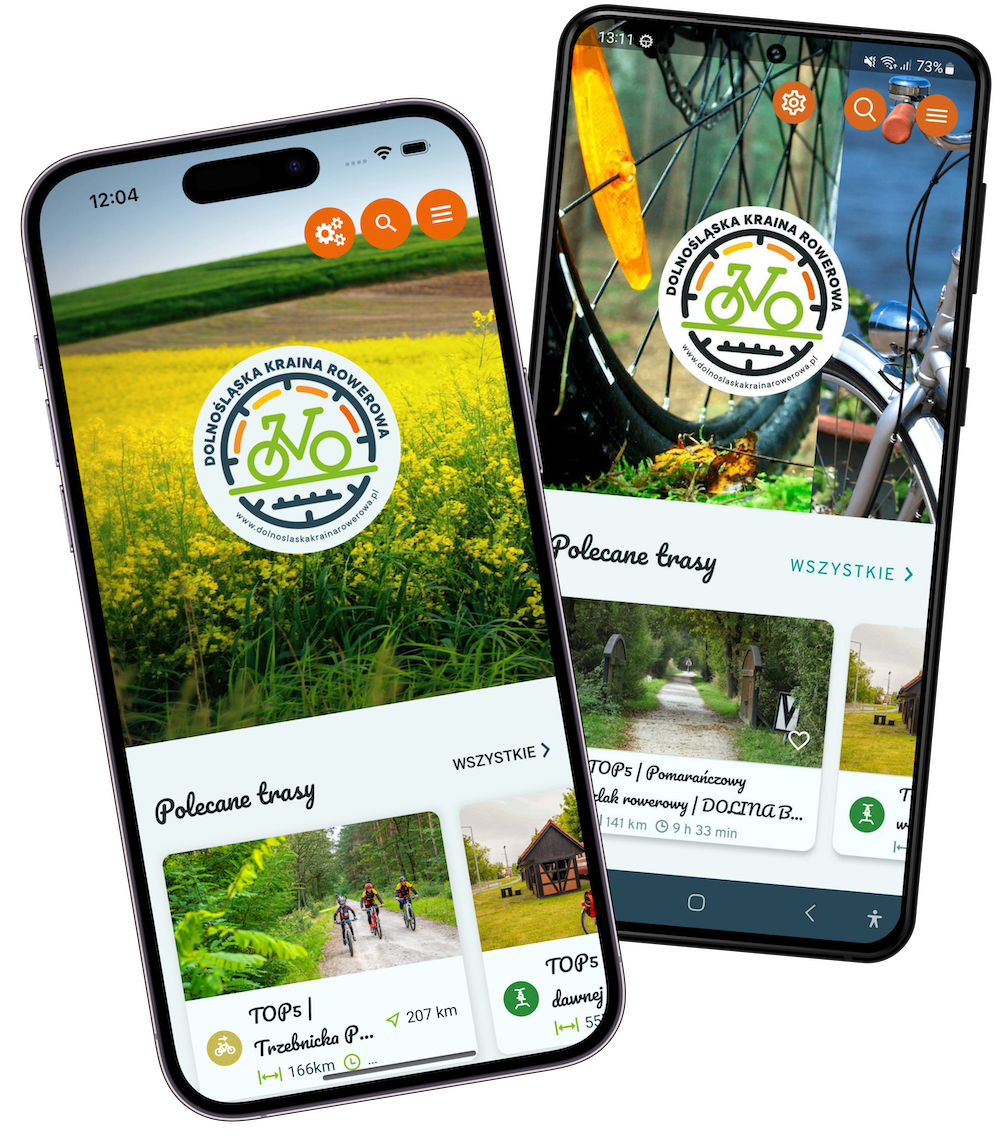The red cycling route is a fairly long loop around the Twardogóra commune, ideal for a day trip. It is best to start the route in Twardogóra, which is well connected with Wrocław or Oleśnica and where you can leave your car at public car parks (e.g. near the Twardogóra Sports and Entertainment Hall).
The trail has a varied character and at times it can be difficult due to uphill sections. From Twardogóra it is best to head north towards Kotlina Milicka (Milice Basin) with several pond complexes, then the route leads straight to Goszcz, where it is worth visiting the restored Palace and Park Complex (preserved as a permanent ruin), which is the greatest gem of the area and the highlight of the route. It is worth spending some time here and learning about the history of the place, either individually or with a guide. Then the route crosses the ridge of the Twardogórskie Hills twice on forest paths, leading along the way past the charming wooden church of St. Idzi in Chełstów. The second section of the trail has a few undemanding climbs (max. 250 m elevation gain). The route alternates between local asphalt roads and paved forest roads. Occasionally sand will be encountered in the forest, especially during the dry season.
ROUTE OF THE TRAIL:
Twardogóra - Olszówka - Kuźnia Goszczańska - Nowa Wieś Goszczańska - Droździęcin - Zakrzów - Drągów - Goszcz - Gola Wielka - Chełstów - Drogoszowice - Sosnówka - Dąbrowa - Twardogóra
PLACES OF INTEREST ALONG THE ROUTE:
Olszówka | a huge manor farm near small ponds
Soczewica Pond | a resting place, in the vicinity rows of magnificent oak trees
Nowa Wieś Goszczańska | a viewpoint on the hilltop overlooking Twardogórskie and Krośnickie Hills
Zakrzewo Pond | a dyke with magnificent oaks in the Barycz Valley Landscape Park
Drągów | a wayside shrine, probably converted from a memorial to German inhabitants killed in World War I
Goszcz | The main attraction of the village is the palace and park complex from 1730-1740, erected by the Reichenbachs. The original palace was destroyed in a fire; the present building dates from 1749-55, built in the Rococo style it was a real jewel of Silesia. It burned down in 1947. Never to return to its glory, a restoration was completed in 2023, making the main building available as a permanent ruin that can be visited. The ZPP hosts many cultural events, with a mini-museum of the Hard Mountain land and a seasonal café in the left wing. One of the more charming places in the region.
Troska | after the hamlet, a longer climb to the ridge of the Twardogórskie Hills
Gola Wielka | a horse stud, a former Evangelical cemetery, further on we enter forest roads
Chełstów | St. Idzi's wooden church built after 1666; a timber-framed, single-nave church with a rectangular presbytery and a square tower, inside there are Gothic sculptures from ca. 1400 and a Baroque altar from the 18th century
Drogoszowice | wayside cross, fishing ground
Drewniany Młyn | hamlet with holiday buildings, wooden chapel, behind the village a metal plaque with the date 1911
Sosnówka | in a meadow at the beginning of the village, vertically aligned fragments of the original Berlin Wall; the collection comprises 30 reinforced concrete slabs and is the largest in the world. The slabs were brought by the doctor and art collector Ludwik Wasecki.
Green Angle Forest | memorial to the hunter with the initials R.M. shot dead on 3.10.1922.

Exhibition of the Berlin Wall in Sosnówka

Panorama of Goszcz, view from the park and pond

































